Steph W. from SEOPressor


...help you check your website and tell you exactly how to rank higher?


94
score %
SEO Score

Found us from search engine?
We rank high, you can too.
SEOPressor helps you to optimize your on-page SEO for higher & improved search ranking.
By vivian on August 9, 2017

As a content marketer, this is one of the most frequent questions I get asked. The answer depends on several variables. Your skills and knowledge in your topic area count for a lot, but so do your experience as a writer.
Today, I’m going to take you through my writing process with timelines so you can discover how to write a blog post consistently, without taking too much time away from growing your business.
Short Answer: It takes someone new to content writing around 6.5 hours on writing a blog post complete with research.
Long Answer: For the long answer, we need to look at how to write a blog post step-by-step, and divide that time up appropriately.
Here we go – more tips for writing a blog post and why blog post matter today.
Time: 40 minutes

The foundation of writing a good blog post is research. You should be doing a minimum of 40 minutes of research per post. SEOPressor prides itself on creating research-backed, scientific, and data-oriented articles that give you real, actionable takeaways.
We do that using a thorough research process. This goes two ways – directed and undirected.
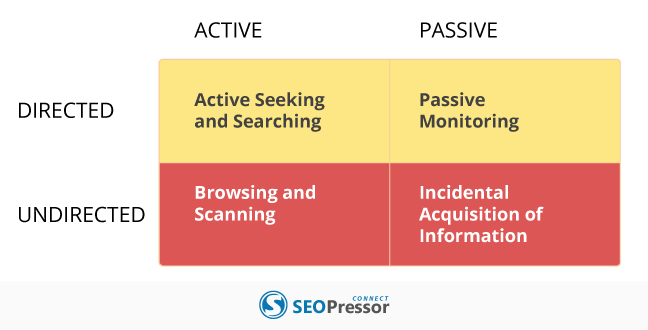
Directed research is based on what we already know. We believe that simply stating a fact isn’t enough – you have to back it up. While sometimes what you’re saying may seem obvious, it may not be for everyone. Doing the research will enable you to flesh out your facts and establish your authority. If you feel like this is a waste of time, scientists researched if it was harder to see things that are further away.
Undirected research allows you to look at a topic area and disappear down the rabbit hole of Google searches, led by your curiosity. With just a series of keywords related to your blog post headlines, you can find out what’s already been written and what questions still need answering. This can help you define your own position by contrasting it with others while finding lots of material you can cite to make your arguments.
In truth, there’s a lot of research to be done before even you start researching a single blog post. You need to know what area you’re about to start publishing in, which means identifying gaps in the available knowledge and filling them with your own, high-quality material.
Here at SEOPressor, we have created a way to collect research across Evernote and Google Docs. We include the link, the author’s name and the date, and the key quote or statistic we found interesting. That way, we have a library of facts to back us up on everything in the topic areas we cover. That saves time over the long run.
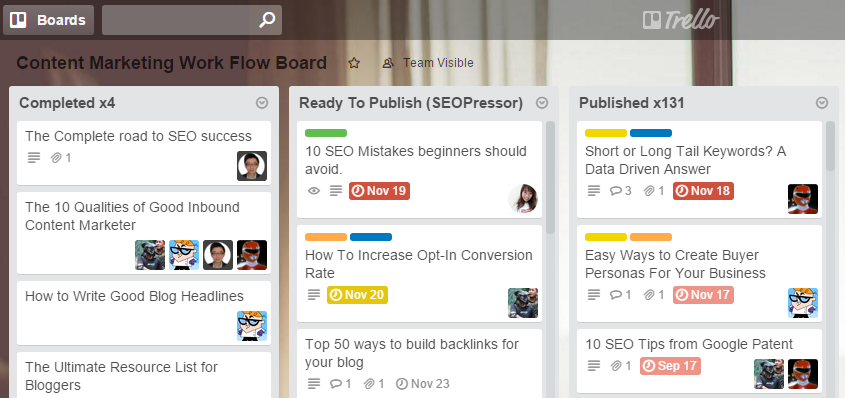
Here at SEOPressor we use Trello to plan contents ahead and brainstorm the best titles.
We then plan our content outlines on our team Trello board to make sure we’re all running to schedule and that we’re not treading on one another’s toes.
Time: 30 minutes
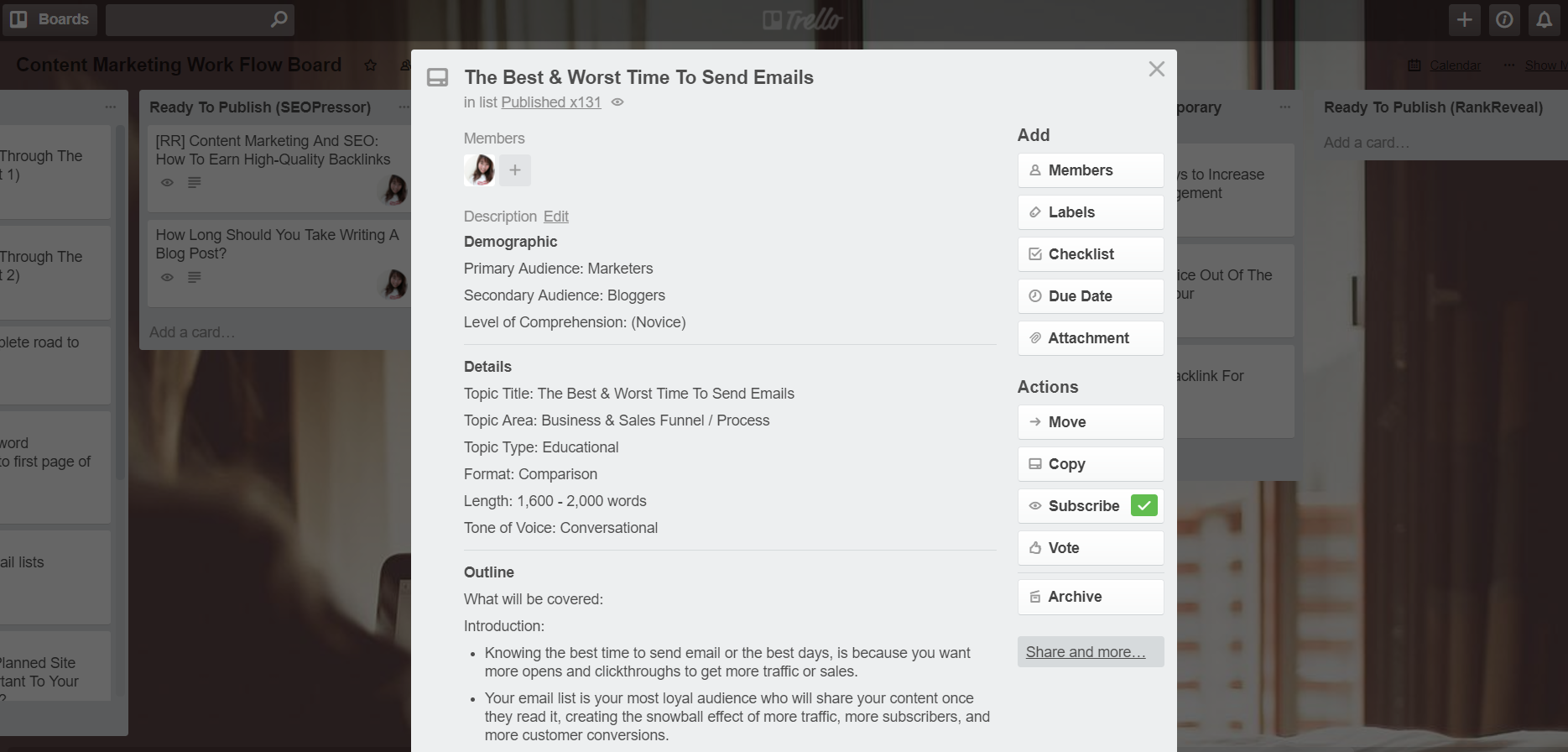
Once you’ve done some research, the biggest time-saving measure you can use is to pour that into a mold. No one builds a house without scaffolding because you need structure to build something that matters. It’s the same with writing.
Take the research you’ve gained and organize it. Group similar facts and points, and think about how one might lead to another. When you have groups of facts, give these their own headline to create sections.
Order your sections into the most logical order for them to appear. Think about storytelling, backed up by evidence. These are the two most powerful forces you can use.
Time: 3 hours
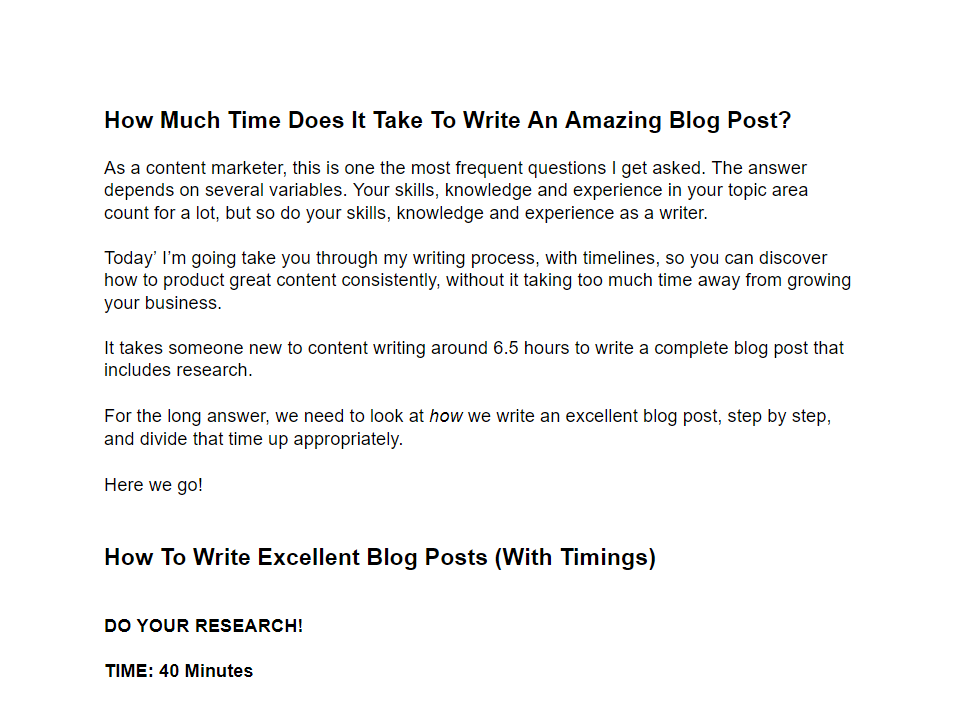
We usually draft most of our blog posts on Google Docs before finalizing it on SEOPressor.
The biggest thing about a first draft is to take away two things: pressure and distractions.
Pressure comes from within. Don’t think about getting it ‘right’ or perfect. Just write. Be free, be controversial, make bold statements, crack jokes.
Distractions come from without. For this, you can use something like Google Docs to create a minimalist writing environment or use anti-distraction Chrome extensions like StayFocusd to stop you from straying onto Facebook and Twitter.
Create a block of time in which to write. This will limit demands on your attention and allow you to be more productive. Put your phone out of sight.

Make sure you put first things first. Write the introduction. The introduction is designed to give your audience a clear idea of what benefit they’ll get from reading, what content the post will include, and what direction it’s going in. This will be invaluable to you in actually creating the content.
Hunter S Thompson said, “Write drunk, edit sober”. While I don’t recommend that, it does demonstrate how uninhibited you can be at the first draft stage.
Watchouts:
By the end of this first draft, I’ll probably have anywhere between 2,000-3,000 words to work with. Which is why the next phase is so important.
Time: 1 hour
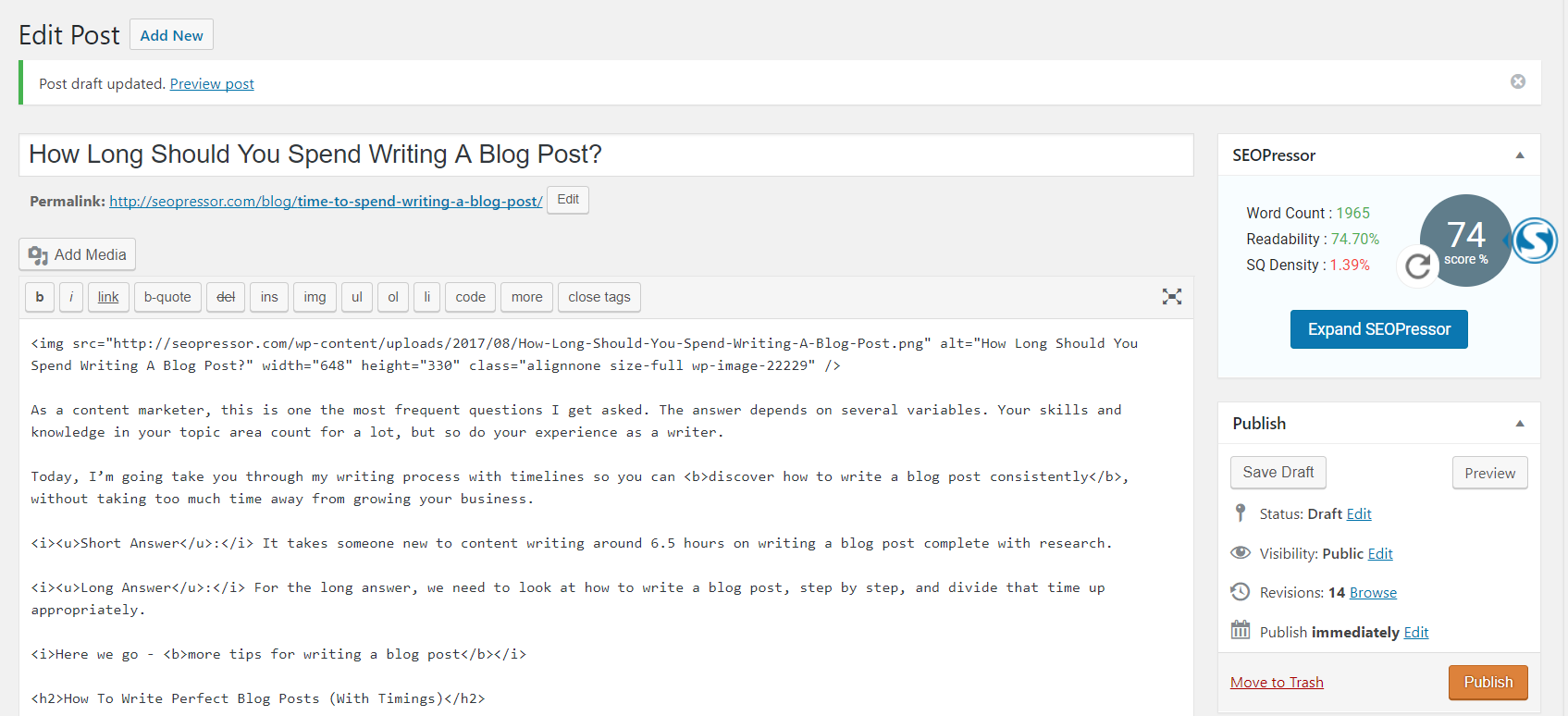
Now, here’s the magic part. Change blindness is a thing. When you’re writing a blog post and re-read it too quickly, you’ll probably only see what you intended to write, not what’s really there.
So once your first draft is written, let it sit for a day. Let your brain stop buzzing. Then come back to it focused, refreshed, and with a keen literary scalpel. This is where you take the bunch of ideas, thoughts, and rambles of the first stage and clean them up. Sculpt them into a masterpiece.
Two things will ordinarily happen: you’ll cut out huge chunks of what you wrote, and you’ll be writing a blog post with huge new chunks now you can understand the content better as a reader, not a writer. When I can come back to something with fresh eyes, I’m often able to see things from a better perspective.
The usual editing checklist looks like this:
You can also consider using these 5 Google Docs Add-ons that we recommend for content writers in your editing process.
Time: 1 hour
We use Canva to create most of our images. It’s an intuitive graphic design platform that helps you make your posts look premium without the time, effort and resources that go into professionally produced imagery. It also allows you to create beautiful iconography instead of relying on stock photos.
If we need something fancier, such as an infographic, we will then make a request with our designers, who will work on it using Adobe Photoshop. Photoshop is unbelievably powerful but has a steep learning curve, so that’s a discussion for another time.
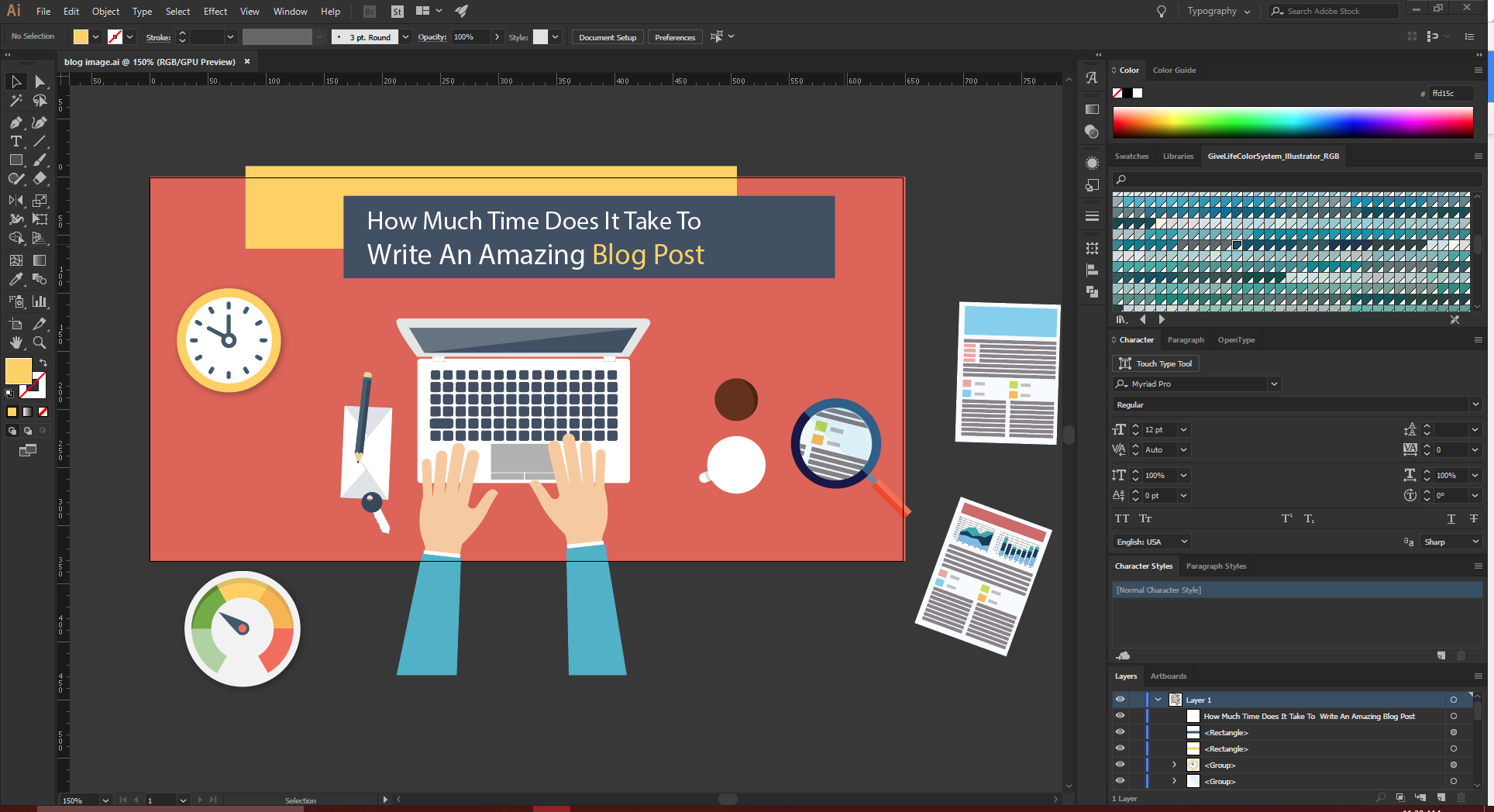
Time: 5 minutes
Considering how powerful SEO is, the process of it takes almost no time at all, as long as you’re using the right tools.
It’s also worth pointing out that when working strategically on your content plan, you often have your keywords before the writing process even begins.
If you need to do keyword research, you can use Google Keyword Planner or LSIGraph to give you ideas about what to incorporate. You can also use Google Trends to see how you can link what you’ve written to what people care about right now.
Or, you can also use my new favourite keyword tool: BiQ’s Keyword Intelligence. Other than keyword data like search volume, cost per click and comeptition, you can also explore the keyword intent and relevance.
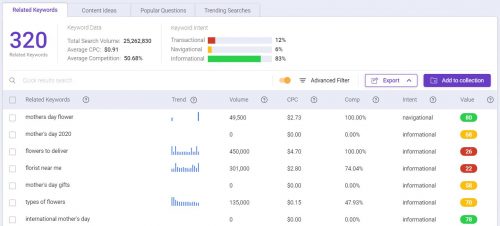
Switching to the Trending Searchers tab, you will also be able to see the trending topics. Discovering trending topics can be a great way to get your content marketing relevant.
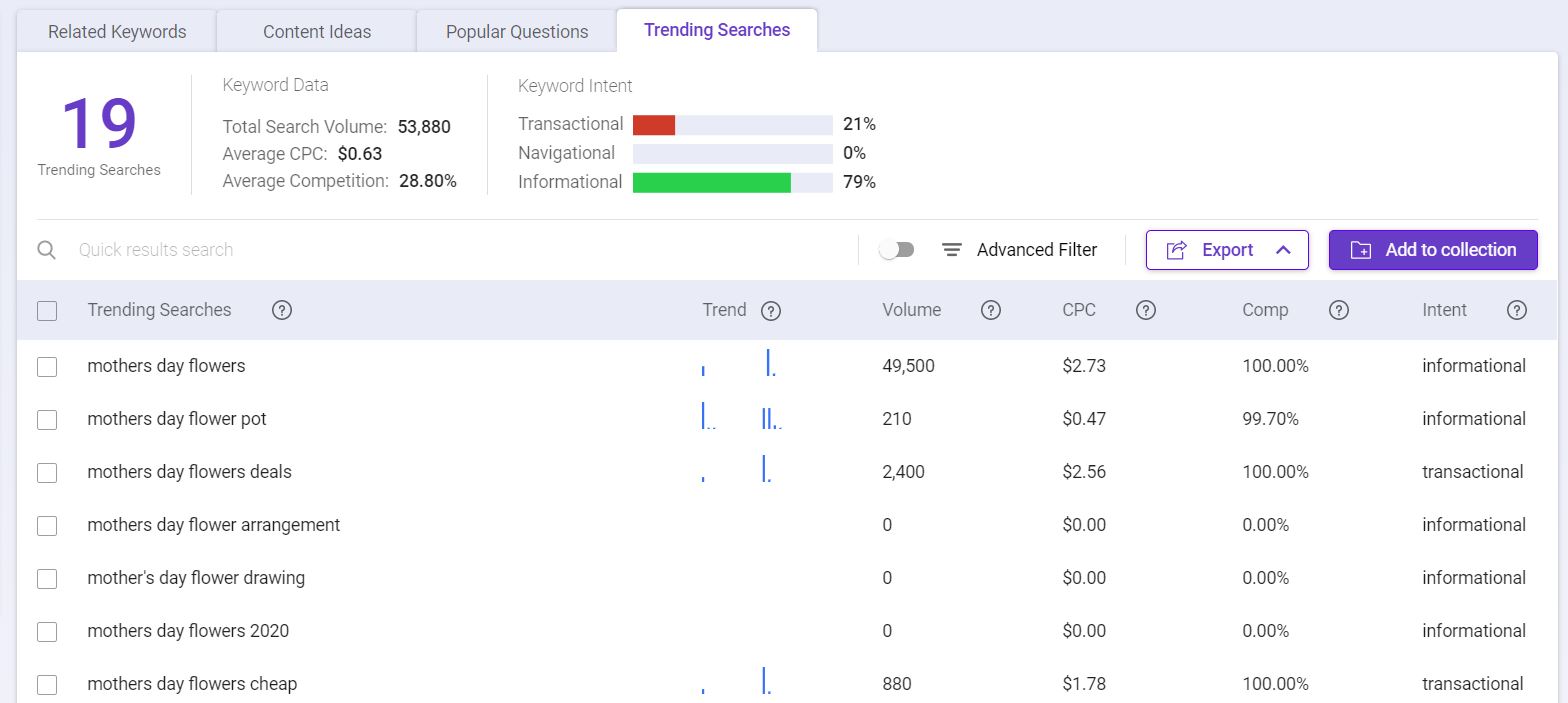
Try BiQ’s Keyword Intelligence for free now!
You can also use SEOPressor to handle the specifics of implementing SEO strategy into each post in a simple, easy way:
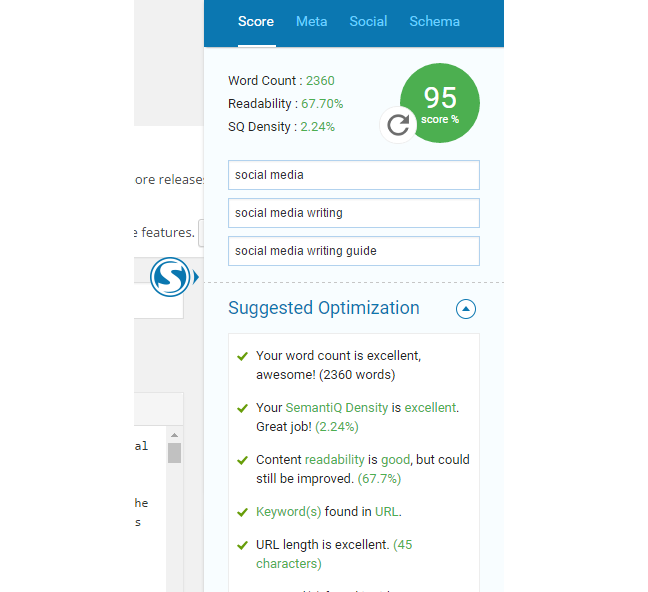
Once you have published your content, you may use BiQ’s Content Intelligence to discover if there is any potential content gap between yours and the top 10 ranking contents.
In the Content Intelligence Analysis tab, switch to ‘Word Vector’

WordVector tells you the performance of your content against the Top 10 SERP content in relation to your target keyword.
The best part about this feature is that it can tell you exactly which paragraph has lesser relevance to the overall content.
Now, you will be looking at the “Edit Needed’ section to check which paragraph needs revision.
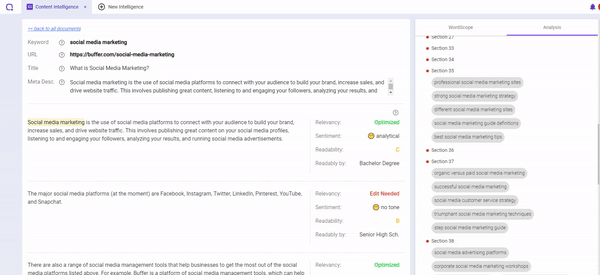
You can then dive deeper into the paragraph and analyze how to better improve its relevancy to your target keyword.
Helpful tip: Try to use related keywords to increase your overall content relevancy than stuffing the same target keywords.
Try BiQ’s Content Intelligence for free now!
Time: 5 minutes
Some people say the best material is generated when you start with a title. To them, I say, “Snakes On A Plane”
Instead, I believe you need to know what you’ve written in order to create the best title. You also have to know what people are looking for. That’s why it’s a good idea to put your keywords into BiQ’s Keyword Intelligence, which comes up with suggestions based on top performing headlines.

Each ideas come with important data such as trend, search volume, and search intent. This allows you to make an insightful decision when it comes to deciding which title to use.
Try BiQ’s Keyword Intelligence for free now!
If you want to put some extra punch in your headline to help generate more traffic, you can also use these 28 emotion-invoking words to get people hooked.
The great thing about great content is that the content lasts. I regularly cite articles from 2010 and 2019, which means those websites are STILL seeing a Return On Investment (ROI) from that content years later. The same will be true for you if you create valuable, high quality, insightful, and actionable content that people can find.
The final thing you need to do is make sure people do find it, and that means content promotion. Use Facebook, Twitter, LinkedIn, and Google + to syndicate your articles. Not just once, but you have to post about three times on the first day on Twitter. Post again to the social media platforms a week later, then a month later. Give your article every opportunity to be seen.
So, I’ve shown you mine, now you show me yours. What does your blogging process look like? Do you have more tips for writing a blog post? Is there anything else that you’d like to know? Let us know in the comments section below.
[This blog post was originally written and published by Joanne on Aug 9, 2017. It is most recently updated by Winnie on March 3rd, 2021.]
Updated: 4 January 2026


Save thousands of dollars (it’s 100x cheaper)

Zero risk of Google penalty (it’s Google-approved)

Boost your rankings (proven by case studies)
Rank High With This Link Strategy
Precise, Simplified, Fast Internal Linking.
